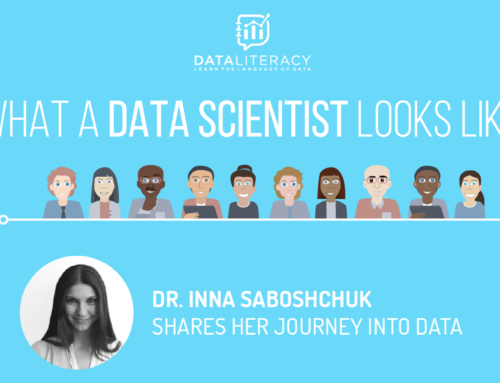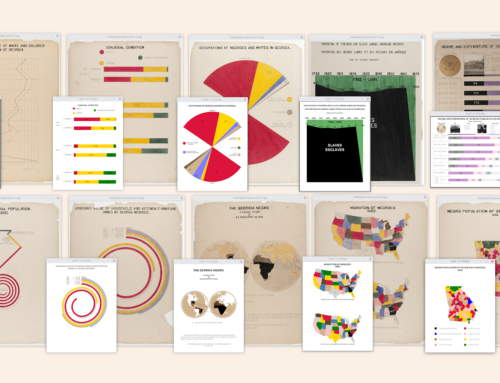The Domino Sugar Factory was one of several sugar factories located in Northern Brooklyn. Having once produced more than half the sugar consumed in the US in the early 20th century, this NYC landmark represents the industrial waterfront this area was. Photo: Paul Raphaelson
{Note: This blog post was written by Data Literacy Advisory Board member Allen Hillery and originally appeared on Medium in July 2020}
Addressing Racial Inequity Using Data
When I started writing this call to action at the beginning of 2020, I had no idea I would experience two life changing events. In fact, I don’t think that anyone thought that we would be navigating a global pandemic as well as long overdue talks on racism in America. While Covid-19 has us searching for a new normal, George Floyd’s murder has set off a resounding “We’ve had enough” across America. From policing, home ownership to healthcare and beyond, America has to face systematic racism that has disenfranchised Black people for centuries. Fortunately there are many people standing alongside Black Americans as allies in outrage with us. We may not have the answers on how to tackle this problem but we have the resolve.
Data Literacy is the Ability to Read, Understand, Create and Communicate Data as Information.
In this call to action, I address how it is key to providing better career opportunities to underserved communities. Living in a world where data is ubiquitous, the more familiar someone is with understanding data, the greater their chances are at having better career opportunities. One of the challenges I would soon discover is identifying a baseline to get everyone communicating with data.
Home Will Be There When You Return
I’ve been working on a study that will help bridge the gap to local hiring in Northern Brooklyn through data literacy. This area has become a major player in the startup tech scene over the last few years. According to the Center for an Urban Future’s (CUF) Brooklyn Innovation Report, Brooklyn is now second only to San Francisco for new startups, at a growth rate of 365% since 2008. It was also a place that many families over the years, including mine, affectionately called home.
I was born in the late 70’s when NYC had hit a serious fiscal crisis. I hear stories about the famous NYC blackouts and vaguely remember the graffiti filled subway cars which symbolized the high crime rates that were a dark cloud over the metropolis. This area was once an industrial region that was known for thriving commerce and manufacturing in the early 20th century. I remember the old Domino Sugar Factory growing up. It once produced more than half the sugar consumed in the US. Brooklyn came upon hard times as manufacturing dropped by 50% between 1954 and 1990. Now the property is in the middle of redevelopment as office space, residential towers and parkland fills its landscape.
NYC was able to make a revival in the last decade of the 20th century showing our trademark perseverance. Growing up, I had no idea of the impact of my surroundings or the sacrifices my parents had been making to give us a better life. In the mid-80’s, we’d moved further out into the suburbs of Queens. So it’s with great nostalgia and a desire to give back to the community that raised me that I help tackle this new workforce challenge. How do you create a workforce development program that prepares young adults for a digital age? I believe the key to this is helping them learn how to communicate with data.
The Importance of Data Literacy
Ninety percent of the world’s data has been created in the last two years. If we stopped and thought about how much data is generated in a minute, it could be equated to roughly 500K tweets or a thousand Uber rides. While this has caused a surge in tech opportunities, the speed at which we have been acquiring data has caused gaps in how we process and interpret it. In fact, our overall workforce needs to adjust to the accelerated pace caused by the influx of data by becoming more comfortable analyzing and interpreting. In other words, employees need to become more data literate.
Spending the latter half of 2019 looking for ways to create career pathways in tech for 18–24 y/o adults with some college experience has been fulfilling, inspiring, humbling and challenging at varying times along the journey. What skill sets do you teach the students to prepare them for a tech job? How do you get employers to take a chance on a person without a traditional education to vouch for their competency? I decided that to establish a baseline we needed to teach the basics. The program would help a cohort:
- Collect Data from available data sources
- Summarize Data in spreadsheets
- Visualize Data by creating charts
- Identify Patterns from the graphs
- Analyze Data to generate information
- Tell Stories found from the data
The Ecosystem is Broken
While growth in the job market is creating thousands of paying jobs for Brooklyn residents, roughly 25% of NYC’s 8.5 million residents do not possess the education or training needed to enter into a career that pays at least $50,000 a year.
NYC does not have the workforce development infrastructure in place to enable underserved residents to benefit from the opportunities at these tech companies. This is endemic as most tech hubs put down stakes in “up and coming” neighborhoods. High tech jobs are a key driver of growth and offer good paying jobs across industries.
The Importance of Data Literacy for All Workers is Growing at an Accelerated Pace.
Technological advances and automation have changed the landscape and infrastructure of business. Today’s landscape includes a proliferation of data acquired at faster speeds, while companies are diminishing their physical presence to an online one. This paradigm shift eliminates traditional feedback loops. Therefore it is imperative to understand the nuances of customer behavior and feedback utilizing data.
There are Critical Disconnects in the Overall Workforce Ecosystem.
There are four major audiences that are key to this workforce conversation: business leaders, workforce development directors, city/state development officials and the local residents. When a company moves into a new neighborhood, specifically an up and coming one, there is usually a lack of engagement with the community. Oftentimes the company moves in with very little fanfare. This is where the city and workforce development agencies need to sit down and engage these companies and understand the skills needed and begin to connect local talent and vendors to ensure that everyone can benefit from these opportunities.
Incorporating Data Literacy into a Tech Apprenticeship Can Begin to Level the Playing Field for Underserved Communities.
Upskilling employees from underrepresented backgrounds will increase access to high paying jobs and help companies build a diversified workforce. A diversified workforce increases a company’s success quotient and enables them to better understand the voice of the customer. This is an effort that will involve business leaders, workforce development officers and local government agencies to solve.
As all parties begin to work together, the system can begin to mend. Members of underserved communities can begin to be trained on skills that are relevant and meet the expectations and requirements of both companies and local government agencies. Companies can have more hands on deck when it comes to interpreting their data and city and state agencies can potentially give its residents a better life.
Tech Apprenticeships Need to Include Data Literacy
NYC has made its first government supported effort to expand the apprenticeship model with Apprentice NYC. Apprentice NYC is a $5M investment to create 450 apprenticeships in the industrial, health and tech industries by 2020. A majority of the programs are focused on web development and data science. This is definitely a plus, but a track for data literacy would provide both confidence and skill for individuals without programming competency. This lower barrier of entry, will enable them to be employed and narrow the data literacy gap, overall. It’s important that all parties involved understand that one doesn’t have to be a data scientist to be data literate.
Most data related interpretation is basic statistics and math. People do not need to be programmers or machine learning engineers. They need to be able to read data, analyze it and communicate it to peers and decision makers. Companies need data literate employees to make their business more efficient. Having a more data savvy customer service team can help identify customer segments to better engage them or present offers to. This can be made possible working with a data savvy marketing team. The data presentation piece of the puzzle needs to catch up to all the advancements we’ve made in ingesting and processing data.
Companies Need a Diversified Data Literate Workforce for Success
Today’s economy makes running a business very competitive. A lot of this can be attributed to the abundance of data companies have been able to collect. Much of business is now being done online as the data infrastructure has become more advanced and less expensive over the years. While a lot of firms have gotten very good at tracking data, they’re hard pressed to find enough data literate people to interpret and leverage it to grow their business.
The one thing companies have ignored in hiring and training data professionals is their ability or desire to communicate with a general audience. I’ve worked on several analytics teams throughout my career and found the expectations placed on us to be unrealistic at times. Analysts are expected to wrangle data, analyze it in the context of knowing the business and its strategy, make charts and present them to business stakeholders with short turnaround times. Wash, rinse and repeat. The largest bottleneck I’ve observed is a team’s ability to understand the data and make informed decisions based on it.
In addition to benefiting from a data literate workforce, employers can increase their success quotient by having more voices and perspectives represented in their organization. The “voice of the customer” for most companies comes in many colors and walks of life. With today’s competitive market, it’s crucial to know how different customers value your products and services. It’s equally important to have members of your workforce weigh in on what products and services will best serve your customers.
Plugging Into A Changing Workforce
Leila Janah was a social entrepreneur taken from us far too soon. She was the founder and CEO of Samasource and LXMI two companies which share a common social mission to end global poverty by giving work to people in need. Unfortunately, she passed away due to complications from a rare form of soft tissue cancer called epithelioid sarcoma. Janah’s left behind a remarkable legacy through her social enterprises. Her company, Samasource has helped 11,000 workers in nine countries find employment to date. Janah mentioned in a 2015 interview with Wired that earnings of the average worker in East Africa and Asia who trained with her company rose from $800/yr to $3,300/yr and stayed there.
One of Leila’s first assignments out of Harvard took her to Mumbai where she would manage a call center staffed by well-educated Indians. The ride there took her past one of Asia’s largest slums, Dharavi. She credits this experience as starting her company Samasource. Sama is Sanskrit for “equal”. Janah’s perspective was although outsourcing might have been providing millions of jobs, it wasn’t helping the country’s poorest. When she couldn’t get venture capital dollars to fund her idea, Samasource was launched as a nonprofit that connects poor people to low level tech work.
I’ve been reading about the story of Leila Janah and she inspires my thinking on what it means to give people significant opportunities to plug into a changing workforce. Like Janah, I believe there are plenty of career opportunities to go around. Knowing that there were other people in the ecosystem equally passionate about wanting to see a data literacy program come to life made this experience worth it. Having the opportunity to network with civic leaders, tech executives and the local neighborhood, I learned that:
- This problem can be solved as more leaders come to the table and see the importance of being data literate.
- There are cohorts of young adults looking for an opportunity to make an impact.
- Workforce development needs to be re-examined as technology has quickened the pace of everything.
“Many well-meaning people will insist that eradicating poverty is impossible…Perhaps that was once true, but thanks to technology, it’s not anymore.” — Leila Janah, Give Work: Reversing Poverty One Job at a Time



